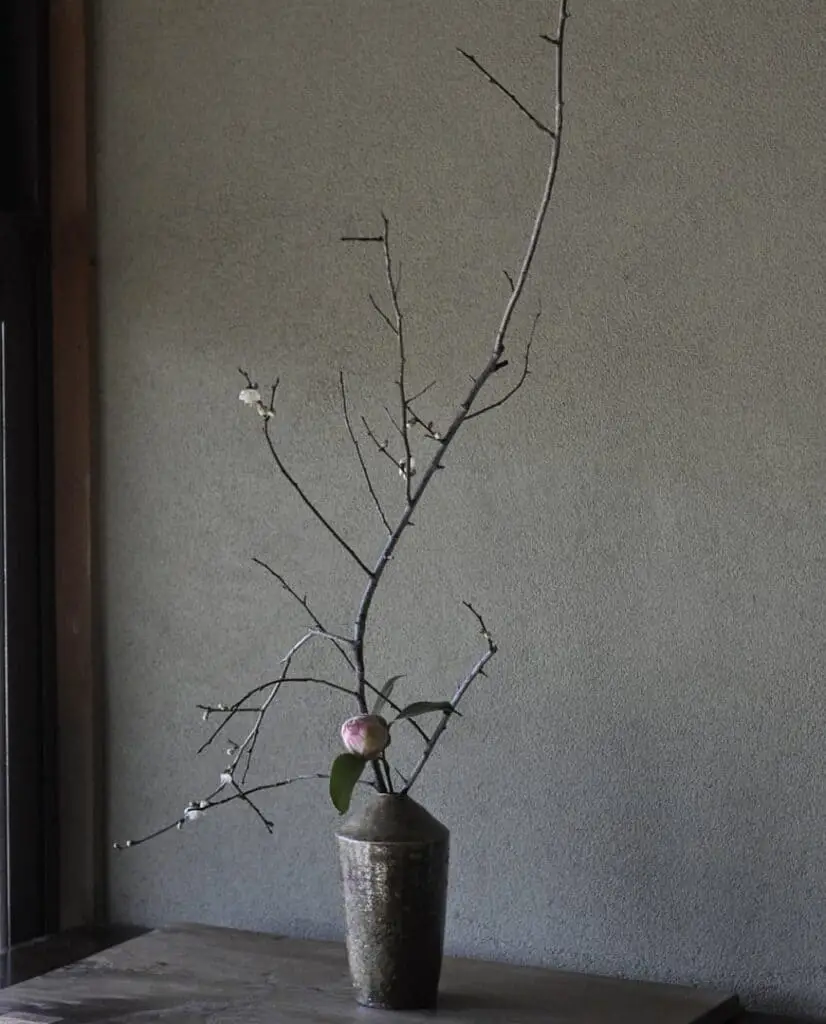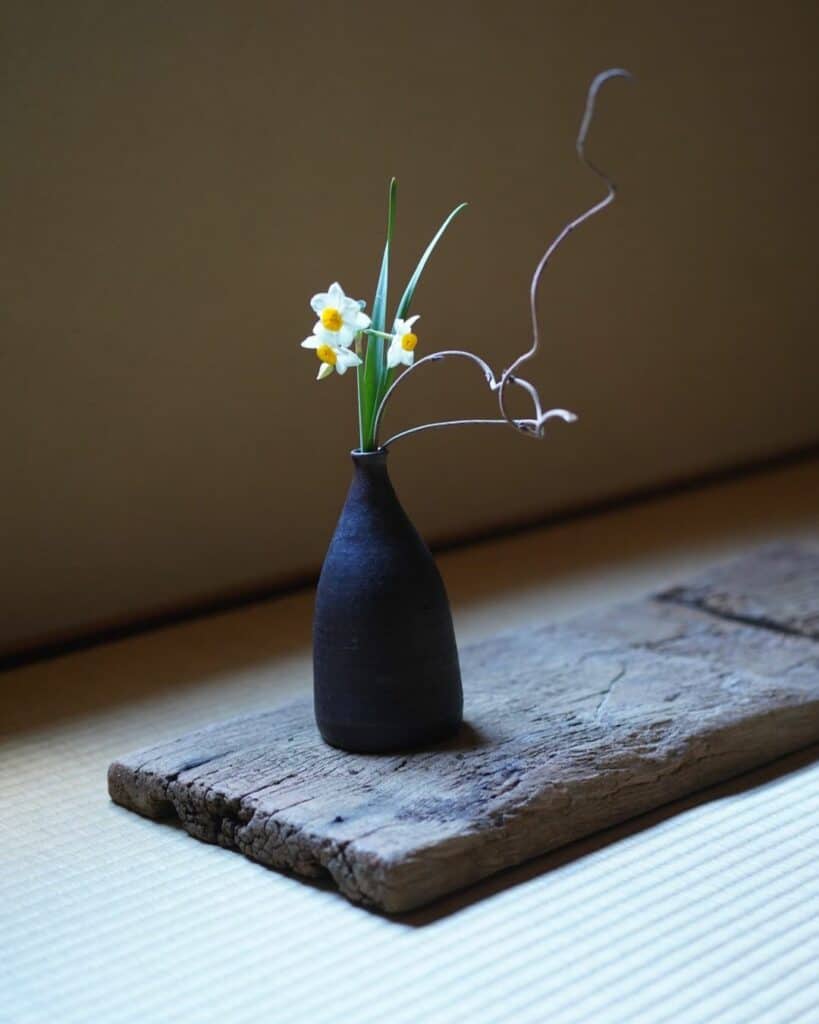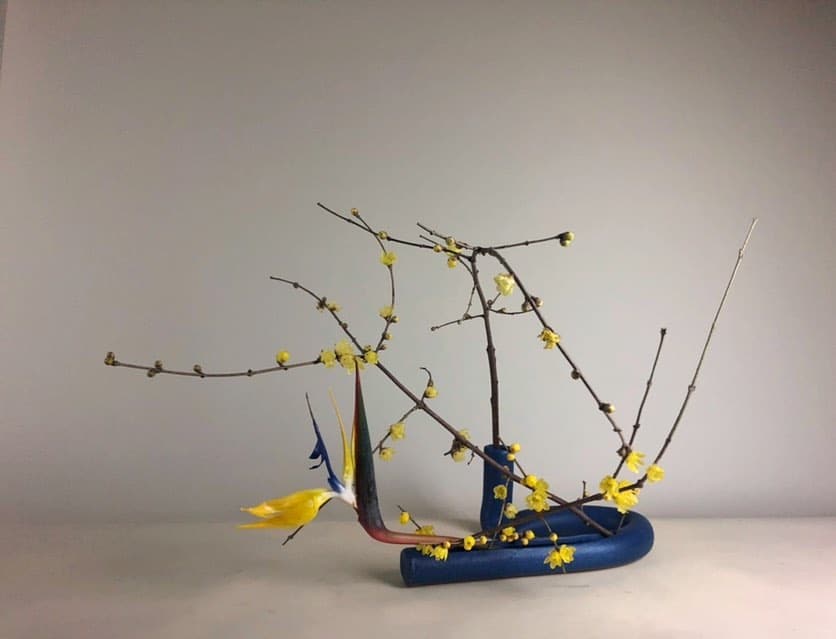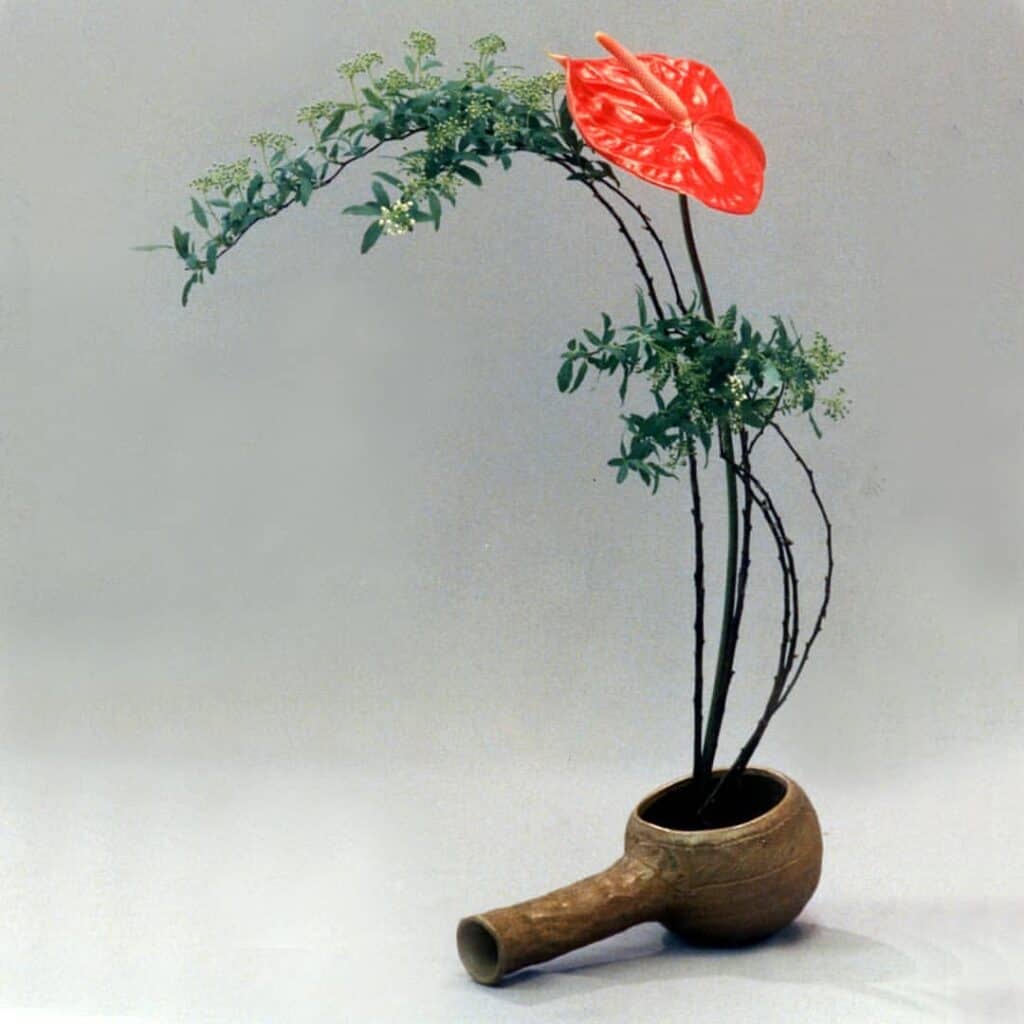When most people think about gardening, they envision a warm day in their home garden, pulling up unwanted weeds, trimming and cutting away at vines, digging fresh holes for new plants, as well as feeding and watering existing plants.
For some, gardening is about appreciating flowers’ beauty, while others prefer to grow herbs, fruits, and vegetables that they can use in their kitchen or consume medicinally.
Ikebana is much different.
Ikebana is the Japanese art of flower arrangement and dates back hundreds of years. The Shinto and Buddhist principles in ikebana design are obvious. Minimalism, attention to detail, symmetry, and incorporating aspects of both the physical and spiritual world are some of the most noticeable.


In today’s article, I’m going to give you a brief overview of Ikebana gardening and design. While it’s not something that you can learn overnight through an internet article, my goal is to give you an appreciation for a different way of thinking so that one day you might start your own journey.
Incorporating Buddhist Principles In An Ikebana Design
Ikebana can be incredibly bold, beautiful, and large, or it can be stunningly small, simple, and unassuming. It all depends upon the statement that the practitioner is trying to make. One gardener might choose to make their flower arrangement point to the heavens, while another might make their flowers simple, pure, and without extravagance.
The one thing that remains constant with Ikebana design is that it’s meant to make a statement. Whether it’s about spirituality, the contrast of good and evil, humanity, the beauty of line and shape, or simply an appreciation of culture, history, and life- the beauty is in the eye of the beholder.

To understand the cultural significance of Ikebana, one must first understand the basic principles of Shintoism and Buddhism. Both of these ancient religions are indigenous to Asia and share many ideologies.
Shintoism is widely regarded as the older religion and is native to Japan. It focuses on the constant battle between good and evil spirits. The religion holds that certain shapes, patterns, and moral principles keep the evil spirits away and encourage the growth and presence of good spirits that bring fruit and life into one’s life.
Buddhism is a newer religion and originates out of China and Korea. It focuses primarily on the development of the self and achieving enlightenment through spiritual virtue and integrity. This religion quickly spread into Japan, where it was absorbed into many pre-existing Shinto beliefs.
Understanding Kado
Kado is “the way of the flower” and is an art form that holds these two ancient religions together and gives practitioners a way of physically expressing spiritual beliefs, meditation, and practice. It shares many of the same principles as martial arts.
Kado and Ikebana design isn’t about who can grow the biggest plant, but about what the gardener can learn about themselves through the process of gardening.
The love, care, and principle put into every act of gardening should eventually result in a truly beautiful flower or plant that brings one’s spirit closer to enlightenment. It’s truly a work of patience (like life itself), and many hours, days, and weeks are spent encouraging the perfect growth of the flower into shapes that are both symbiotic and beautiful.
A great example of this is kokedama. This is a Japanese style of gardening that involves planting small houseplants into balls of moss and soil. Both the moss and plant participate in a symbiotic relationship. The moss lives off of the soil and nutrients received by the plant, and the plant benefits from well-insulated roots and a constant supply of water from the moss.
Check this post out if you want to know which moss to use for your kokedama.
The 7 Buddhist Principles In Gardening
It’s hard to sum Buddhism up in a short article. However, Ikebana is meant to be simple at its core. As such, it’s centered around 7 core principles that have their roots in Buddhist idealogy.
1- Minimalism
Buddhism isn’t about who can be the biggest in the room, but rather who can be the most humble in the room. Plants following Ikebana design principles can be either large or small. However, the focus of the plant is to draw attention to the open space around the plant. Think of a monk on a mountainside rather than a rich man covered in jewels and surrounded by a crowd.
2- Shape

From the time the seed is planted and begins to grow, the gardener should create a goal shape for the plant. Through the life of the plant, the gardener should slowly craft it into the desired shape, clipping away all that is unnecessary.
3- Silence
Buddhism utilizes long periods of silent mediation so that one can become one with the environment around them and flow with the living world. Working with plants involves intense focus and flexibility as you must learn the patterns of the plant. For many, this can be a deeply meditative experience.
4- Humanity
Although Buddhism is centered around spiritual enlightenment, one must fully embrace and accept their human nature before being able to reach their spiritual potential. Some Ikebana projects are designed to express and release human emotions into a form where they can be truly accepted and shared with the world.
5- Form

Although part of Ikebana design involves planned growth, the gardener must also realize that they can’t control everything. Each plant has it’s own natural form and patterns that must be learned, accepted, and worked with to create a beautiful result. Nature cannot be forced.
6- Triangular Structure
Many Ikebana designs feature a triangular structure. Buddhism is meant to harmonize heaven, earth, and humanity. These three should exist with each other, not separate from each other.
7- Culture
Lastly, Buddhism has strong roots in tradition and the appreciation of one’s roots. Although the religion has spread around the world, one must appreciate and respect the traditional aesthetics, design, and spirit of the Asian continent.
Do You Have To Be A Buddhist To Practice Ikebana?
Just because there are Buddhist principles in Ikebana design doesn’t mean that you have to be a devout Buddhist to appreciate and practice the art form. Unlike other religions that focus on rigid rules and laws, Buddhism is about finding a deeply personal path to enlightenment.
By dedicating yourself to perfecting an art or a craft such as Ikebana, you can better learn yourself and come closer to enlightenment. However, you don’t have to be a Buddhist to enjoy, practice, and appreciate Ikebana.
You’ll simply learn how to appreciate minimalism, flow, and become closer to nature. All of these things are calming and will teach you something about yourself and plants in the process. So why not give it a try?